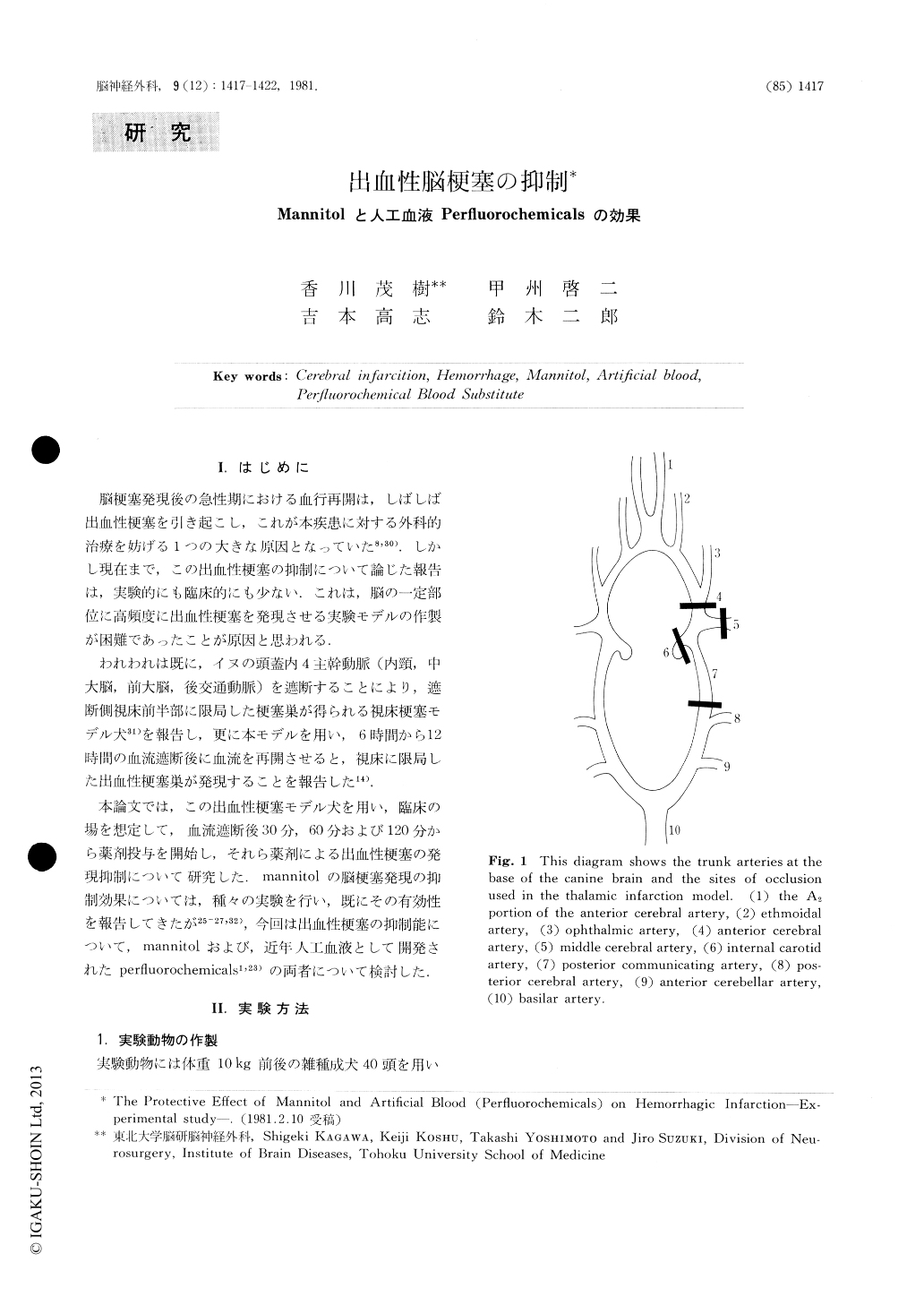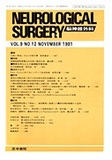Japanese
English
- 有料閲覧
- Abstract 文献概要
- 1ページ目 Look Inside
I.はじめに
脳梗塞発現後の急性期における血行再開は,しばしば出血性梗塞を引き起こし,これが本疾患に対する外科的治療を妨げる1つの大きな原因となっていた8,30).しかし現在まで,この出血性梗塞の抑制について論じた報告は,実験的にも臨床的にも少ない.これは,脳の一定部位に高頻度に出血性梗塞を発現させる実験モデルの作製が困難であったことが原因と思われる.
われわれは既に,イヌの頭蓋内4主幹動脈(内頸,中大脳,前大脳,後交通動脈)を遮断することにより,遮断側視床前半部に限局した梗塞巣が得られる視床梗塞モデル犬31)を報告し,更に本モデルを用い,6時間から12時間の血流遮断後に血流を再開させると,視床に限局した出血性梗塞巣が発現することを報告した14).
It has previously been thought difficult to produce hemorrhagic infarction in animals. Using the thalamic infarction model in the dog, the production of hemorrhagic infarction can be achieved consistently. In this study, the protective effect of mannitol and/or artificial blood (perfluorochemicals) on the hemorrhagic infarction was investigated.
Adult mongrel dogs weighing about 10 kg each were used. Following temporal craniotomy, thalamic ischemia was produced by occluding four trunk arteries (the internal carotid, anterior cerebral, middle cerebral and posterior communicating arteries).

Copyright © 1981, Igaku-Shoin Ltd. All rights reserved.


